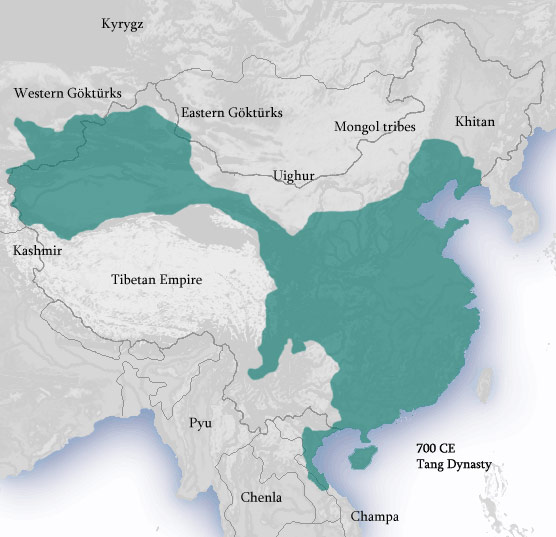 The Tang Dynasty received its greatest blow due to the An Lushan Rebellion (755-763), also known by many Chinese as the An-Shi Rebellion. Led by General An Lushan, the devastating effect of this rebellion spanned over 3 emperors during its course. It left a lot of deaths as well as lasting political effects. The historical facts of this event in China sparked curiosity in people all over the world.
The Tang Dynasty received its greatest blow due to the An Lushan Rebellion (755-763), also known by many Chinese as the An-Shi Rebellion. Led by General An Lushan, the devastating effect of this rebellion spanned over 3 emperors during its course. It left a lot of deaths as well as lasting political effects. The historical facts of this event in China sparked curiosity in people all over the world.
Who was An Lushan?
An Lushan’s birth origin was a mystery from the beginning. It was believed that he was adopted by a Turkish father and a Sogdian mother. Over the course of time, he was able to gain favor from the ruling Emperor of China. He was considered a favorite and was given gracious rewards in the form of a luxurious house that was given by Emperor Xuanzong. He was given an amazing property in 751 which was located in Chang’an.
He was also given full command of Fanyang, Hedong and Pinglu. He was appointed commander of the 3 north garrisons and even on some areas of the Yellow River. He was given a huge responsibility as well as power. It was during this time that he had an idea. Armed with 164,000 strong garrisons, he planned a revolution.
The covert tactics of An Lushan came into effect in a period of eight or nine years. He continuously gained the favor of the Emperor by making sure that he was pleased in every single way. He avoided suspicion by using his standing as a favorite in the Emperor’s eyes. It was said that he started calling himself the adopted son of the Emperor. He said that he was adopted by the emperor’s favorite concubine Yang Guifei. It was this move that he was able to protect himself from criticisms and the Chief Minister Yang Guozhong’s demand for his removal.
The Start of An Lushan Rebellion
Due to his careful tactics, the An Lushan’s rebellion spanned the rule of 3 Tang emperors. The revolution started in 755 and it was during this time that he captured the city of Luoyang. It was also in this city that An Lushan declared himself as the Emperor of the new Great Yan dynasty. The capture of Luoyang was the start of An Lushan’s desire to take over the rest of the empire. He also treated the captured officials respectfully which earned him more troops from the capture. Their next step was to capture the western capital city of Chang’an, Tang. An met a lot of roadblocks along the way especially when he attempted to capture Yongqiu. He was unsuccessful even if he had more garrisons when they attempted to capture the area. It also delayed his attempt to capture Chang’an.
It was 756 when Lushan was able to fully take hold of Chang’an. Before the capture of Chang’an, Emperor Xuangzong and the rest of his court fled to Sichuan by traveling through the Qin Mountains. His son, Li Heng to claimed the throne of emperor in Lingwu. He was then known as Emperor Suzong and later created an army to stop the garrison of An. The capture of Chang’an led to great death tolls and most of the treasures were looted by Lushan’s men. The capture of the western capital led the way to great fatalities and an economic plunge. The new Emperor then took action to recreate a new Imperial army that would address this rebellion. He was able to get help from Turkish tribes and other mercenaries. It was during this new reign that they were able to recapture Luoyang and Chang’an in 757.
The End of An Lushan Rebellion
In 757, An Lushan was killed by his son An Qingxu. The late general’s paranoia was taking a toll to the entourage and due to this his son took over the rebellion. An Qingxu was then assassinated by general Shi Siming who was the follower and childhood friend of Lushan. Emperor Suzong was still the reigning emperor at this time although his son continued his legacy due to an illness that afflicted him in 762. The imperial army and allies worked through history to reclaim the dynasty that was devastated by the rebellion of An Lushan and his armies. The An Lushan rebellion was the end and a new start into reclaiming the Tang dynasty. It did not only affect the royal empire but the people as well were affected due to this warfare. It took years before the wounds of the past were healed in the empire.